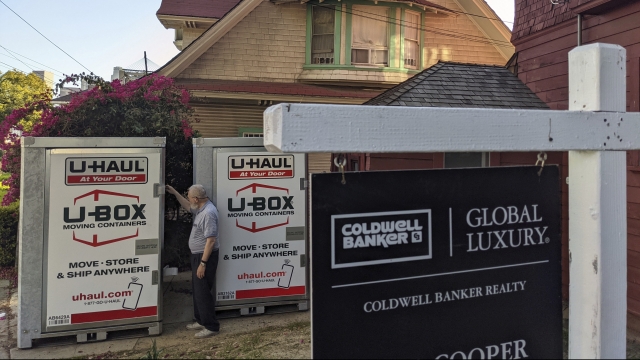There's no question that housing is expensive just about everywhere across the U.S. but especially in major cities.
For many people, living in those cities is only possible through affordable housing programs, which often involve homes that are made available at a reduced cost for low-income residents through public or private programs.
But there are problems with this system.
For one, there aren't enough of these "affordable housing" units out there, and second, investigations show that some of these units aren't being offered for a lower cost even when federal agencies say they should be.
Households making below 30% of the median income are considered "extremely low-income" by the federal government. For example, one of those households in Houston would bring in $26,500 a year on average.
The Department of Housing and Urban Development says no one should spend more than 30% of their income on housing, but it doesn't always work out that way.
In reality, the lowest-income renters spend about 70% of their income on rent, which leaves very little for clothes, food, and whatever else they need to live.
Each year the National Low Income Housing Coalition conducts a report estimating the affordable housing needs for the U.S.
Their 2021 report used census data from 2019 since it was difficult for the Census Bureau to follow up with households during the pandemic.
"Really what the report shows is that this lack of rental affordability and millions of renters struggling to pay their rent was a significant problem for a lot of renters even before the pandemic, and then what we've seen during the pandemic is that problem get even worse," said Andrew Aurand, vice president for research with the Coalition.
Their report says no state has enough affordable and available homes for extremely low-income renters, leading to a shortage of seven million homes nationwide.
A recent Harvard University study found that between 2012 and 2017, the number of rentals in the U.S. that were $1,000 a month or more increased by five million, but low-cost units under $600 fell by 3.1 million.
About 75% of extremely low-income renters are left without affordable housing in Nevada, California, Oregon, Arizona, and Florida.
Meanwhile, Wyoming, Mississippi, West Virginia, Alabama, and South Dakota are some states with the highest amount of affordable housing available. But even 40% of extremely low-income renters in those states couldn't find a home in their budget.
"Higher-income households occupy a significant portion of that low-cost housing, and so millions of units that technically would be affordable to extremely low-income renters are not available to them because all their households with higher incomes are occupying it," Aurand said. "So that's the difference between affordable units and units that are actually affordable and available."
There are different types of housing programs, both public and privately funded. Still, even if you qualify, the shortage of available, affordable housing means you could spend years on a waitlist.
Ultimately, only one out of four low-income households that qualify for federal affordable housing programs ends up with affordable housing.
"The reality is we just don't we don't put enough financial resources into our affordable rental housing programs to adequately serve that population," Aurand said. "You'll often see housing that, you know, as affordable housing. You know, that general question is well affordable for whom?"
In Washington D.C., some apartment complexes that have affordable housing options listed did not come as advertised.
One building said that for a one-bedroom for one person, the units were priced at $1244, and you had to make a minimum of $41,000 to move in.
After crunching some numbers that exceed a third of your income, and according to HUD, that’s not “affordable housing.”
Although some of these affordable housing options can also be paired with a housing voucher from the government to offset costs, nothing in affordable housing is still guaranteed.




